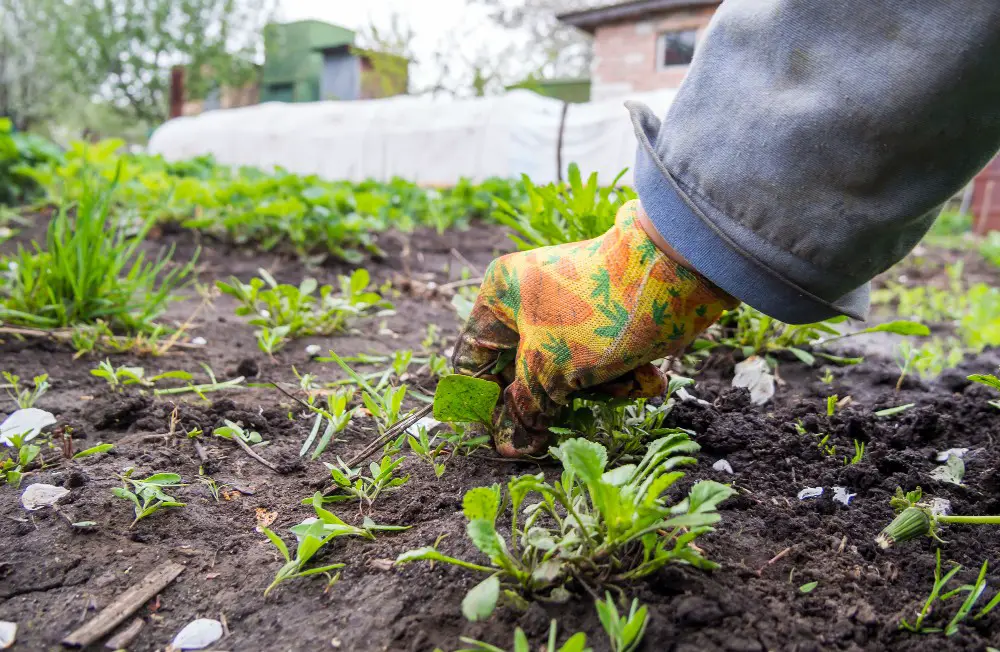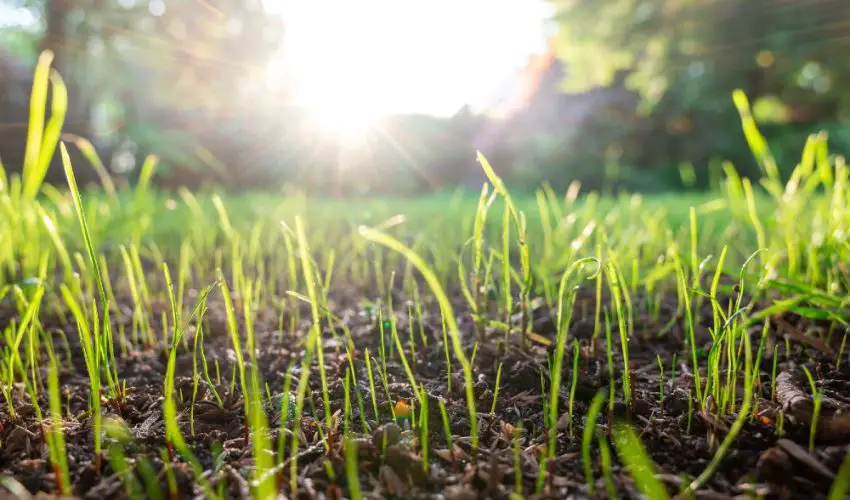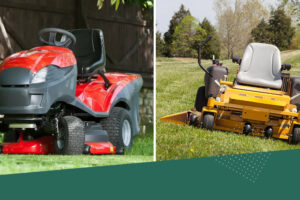If you’ve recently seeded your lawn, it can be absolutely devastating to see weeds crop up amongst the lush and verdant grass. Not only do they detract from the beauty of a yard, but they also compete with grass for water and nutrients.
That said, there are some steps you can take to ensure your new lawn looks its best!
Keep reading to discover my top recommendations for eliminating weeds from a newly seeded lawn and strategies to prevent their future growth.
Table of Contents
ToggleRemove Weeds by Hand
When it comes to newly seeded grass, the best way to remove weeds is usually by manually removing them. With grass seed still fresh and vulnerable applying a weed killer can be too harsh.

Instead, use your hands or a trowel to pull out any unwanted plants in the turf. You may want to wear gloves and work carefully to avoid damaging the tender grass.
Use a Weed Killer to Control Weeds
If you’re looking for a more effective approach to weed control, consider using a weed killer.
Wait 6 to 8 weeks after seeding before using the weed killer treatment because it can damage the grass if applied too early.
My recommendation is to avoid using an herbicide that contains glyphosate, as this may damage the surrounding grass. It’s better to use a selective herbicide because they’re tailored specifically for killing or damaging certain broadleaf and grassy weeds while keeping the lawn’s grass safe.
| Weed Removal Method | Pros | Cons | Recommended Timeline |
|---|---|---|---|
| Hand Weeding | Most environmentally friendly Small risk of damaging young grass |
Labor-intensive Not practical for large areas |
Wait until the grass is at least 2 inches tall and well established, typically 3-6 weeks after sowing. |
| Selective herbicide | Targeting specific weeds Minimizing the environmental impact |
May require multiple applications Is not as effective as glyphosate-based herbicides |
Wait until you can mow the grass, typically 6-8 weeks after sowing. |
| Glyphosate-based herbicides | Fast and effective Can cover large areas quickly |
Potential harm to the environment Risk of damaging young grass |
Wait until the grass is well established, typically 8-12 weeks after sowing. |
Prevent Future Weed Growth
Once you have removed weeds from your newly seeded lawn, it is important to take steps to prevent future weed growth.
Aerating the soil can help create a healthy environment for grass to grow and discourage weed seeds from germinating. Maintaining proper moisture levels in the soil will also help protect against weeds, as most cannot tolerate overly damp conditions.
Finally, applying a pre-emergent herbicide may work to stop weed seeds from ever sprouting in the first place.
Will new Grass Choke out Weeds?
In general, new grass will outcompete weeds for light, water, and nutrients. However, if the soil is poor or compacted, weeds may have an edge over the grass due to their ability to establish quickly in such conditions.
To ensure that the grass will outcompete weeds, it’s important to properly prepare the soil before planting. This includes adding compost or other organic material, tilling, and breaking up any compaction in the soil.
How Long After Seeding Can You Spray For Weeds?
My recommendation is to wait at least 6 to 8 weeks before applying a weed killer after seeding, as this gives the seeds enough time to germinate and become established.
If you decide to spray sooner, be sure to use a selective herbicide that is formulated specifically for the type of grass seed you have planted.
Make sure not to over-spray when applying the weed killer, as this could damage your newly established lawn.
Conclusion
Weeds can be a nuisance in any lawn, but especially in newly seeded ones. By following the tips in this article, you can get rid of existing weeds and prevent new ones from appearing.
To avoid killing the grass make sure wait at least 6 to 8 weeks after seeding before applying a weed killer. Use a selective herbicide that is tailored for your type of grass seed, and take steps to prepare the soil before planting.
With proper weed control measures, you can have a beautiful lawn that is free of unwanted plants!





